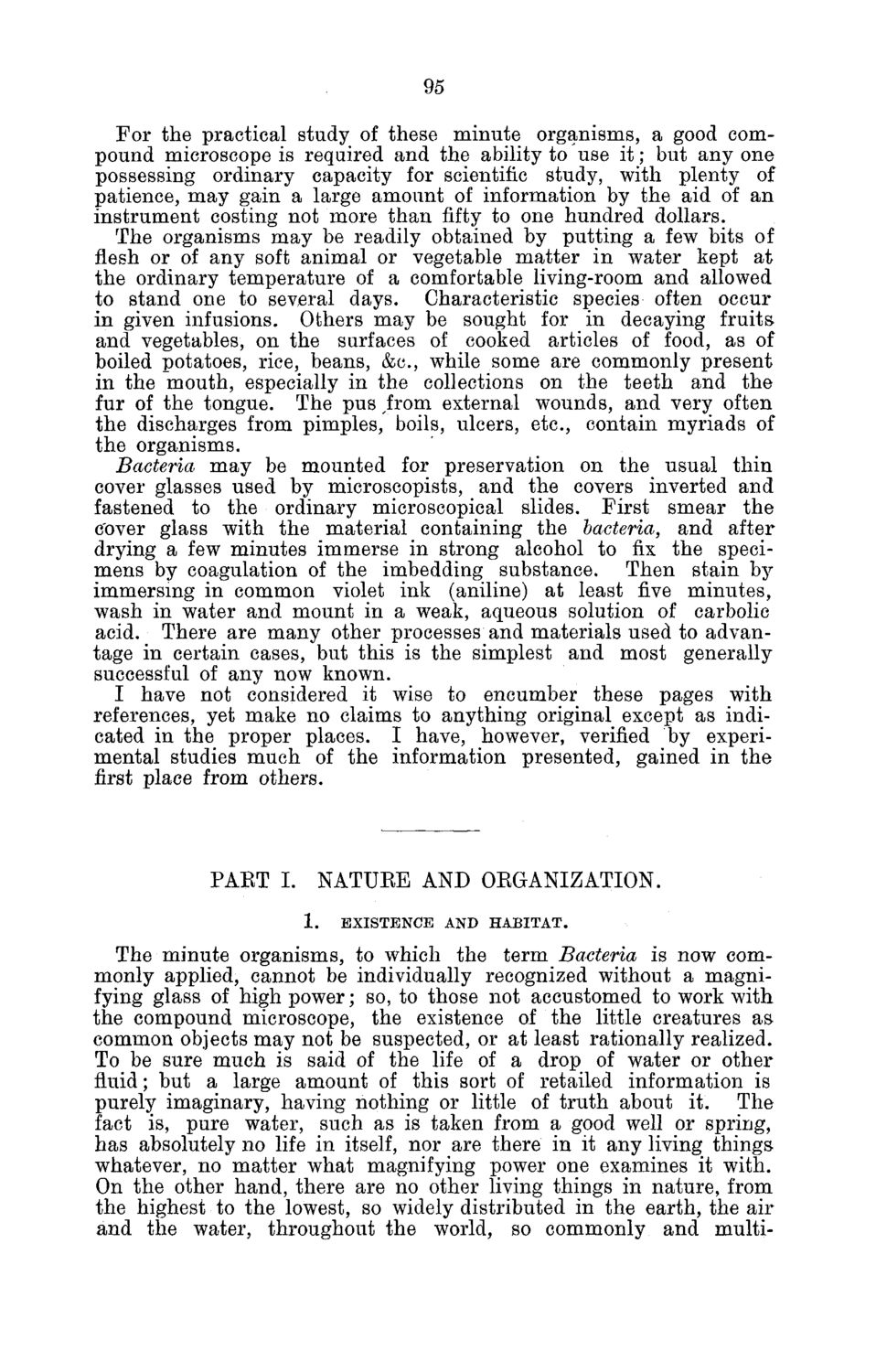| |
| |
Caption: Board of Trustees Minutes - 1882
This is a reduced-resolution page image for fast online browsing.

EXTRACTED TEXT FROM PAGE:
95 For the practical study of these minute organisms, a good compound microscope is required and the ability to use it; but any one possessing ordinary capacity for scientific study, with plenty of patience, may gain a large amount of information by the aid of an instrument costing not more than fifty to one hundred dollars. The organisms may be readily obtained by putting a few bits of flesh or of any soft animal or vegetable matter in water kept at the ordinary temperature of a comfortable living-room and allowed to stand one to several days. Characteristic species often occur in given infusions. Others may be sought for in decaying fruits and vegetables, on the surfaces of cooked articles of food, as of boiled potatoes, rice, beans, &c, while some are commonly present in the mouth, especially in the collections on the teeth and the fur of the tongue. The pus horn external wounds, and very often the discharges from pimples, boils, ulcers, etc., contain myriads of the organisms. Bacteria may be mounted for preservation on the usual thin cover glasses used by microscopists, and the covers inverted and fastened to the ordinary microscopical slides. First smear the cover glass with the material containing the bacteria, and after drying a few minutes immerse in strong alcohol to fix the specimens by coagulation of the imbedding substance. Then stain by immersing in common violet ink (aniline) at least five minutes, wash in water and mount in a weak, aqueous solution of carbolic acid. There are many other processes and materials used to advantage in certain eases, but this is the simplest and most generally successful of any now known. I have not considered it wise to encumber these pages with references, yet make no claims to anything original except as indicated in the proper places. I have, however, verified by experimental studies much of the information presented, gained in the first place from others. PAET I NATUEE AND OKGANIZATION. . 1. EXISTENCE AND HABITAT. The minute organisms, to which the term Bacteria is now commonly applied, cannot be individually recognized without a magnifying glass of high power; so, to those not accustomed to work with the compound microscope, the existence of the little creatures as common objects may not be suspected, or at least rationally realized. To be sure much is said of the life of a drop of water or other fluid; but a large amount of this sort of retailed information is purely imaginary, having nothing or little of truth about it. The fact is, pure water, such as is taken from a good well or spring, has absolutely no life in itself, nor are there in it any living things whatever, no matter what magnifying power one examines it with. On the other hand, there are no other living things in nature, from the highest to the lowest, so widely distributed in the earth, the air and the water, throughout the world, so commonly and multi-
| |